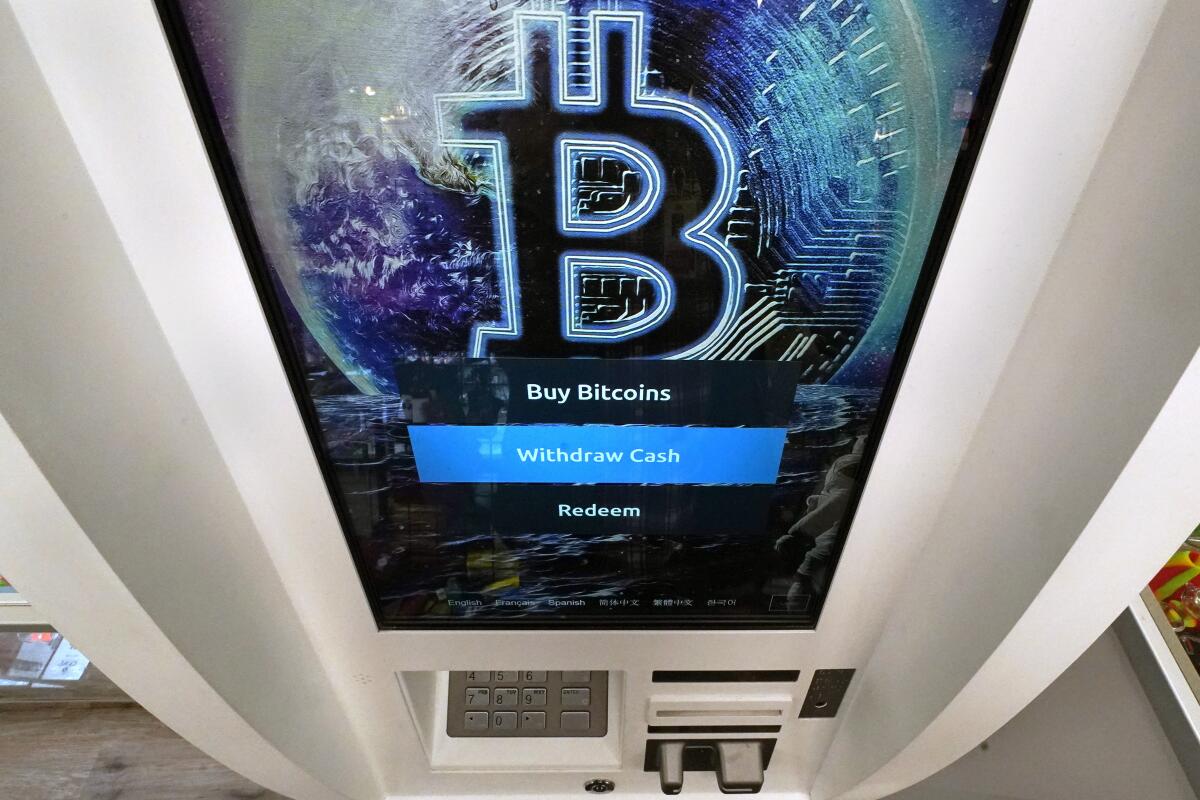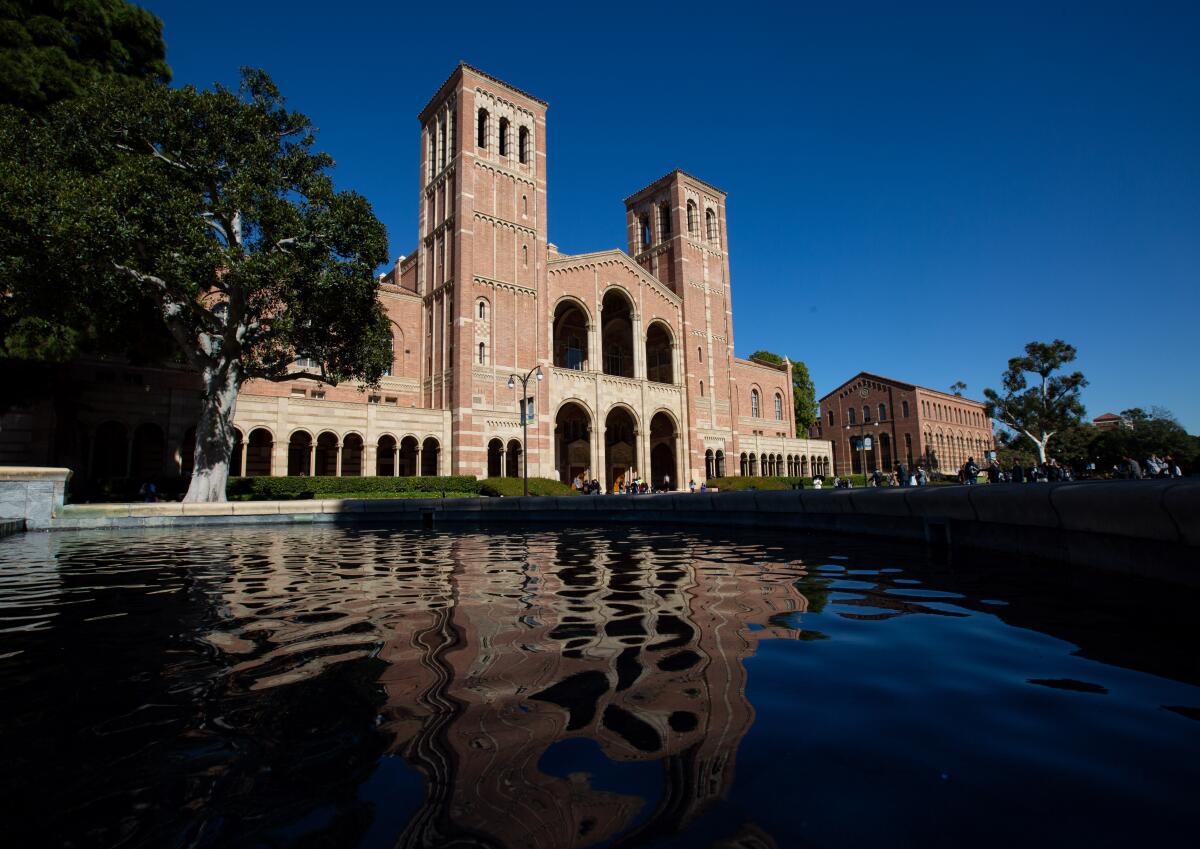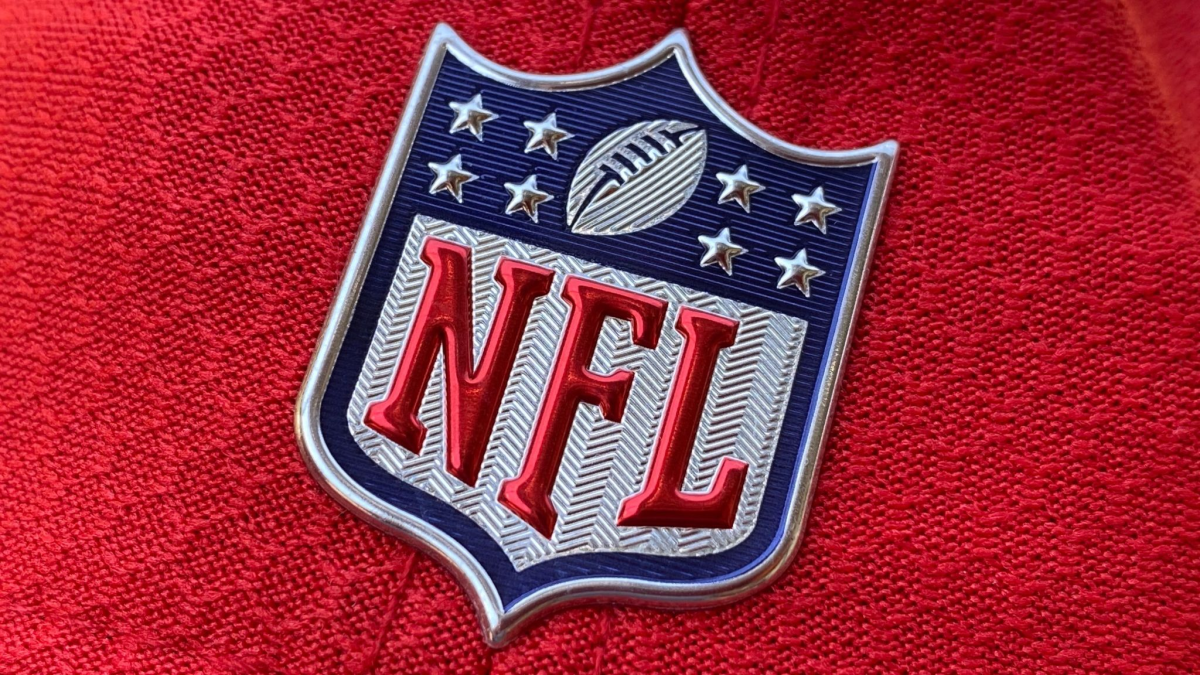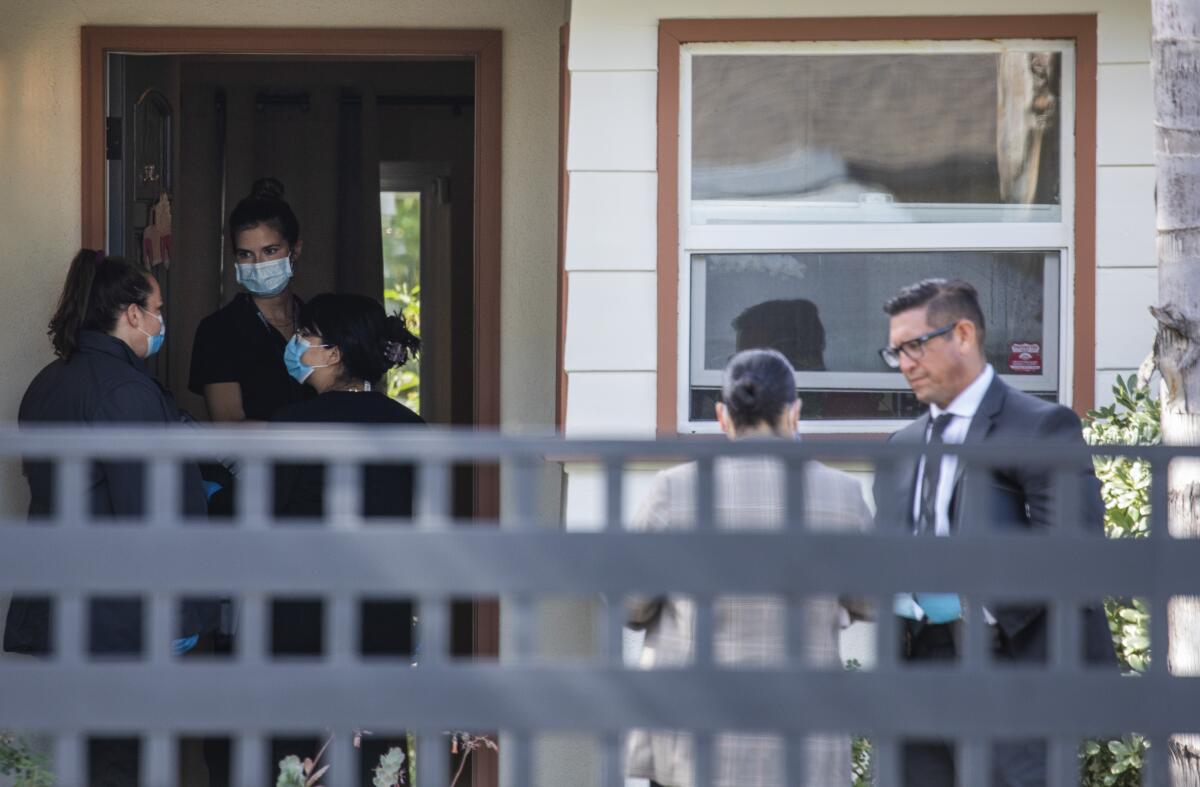California wants to embrace cryptocurrency. But the industry is horrible for the environment

- Share via
Good morning, and welcome to the Essential California newsletter. It’s Tuesday, May 10. I’m Justin Ray.
Gov. Gavin Newsom has signed an executive order for cryptocurrency that is meant to help facilitate its growth in the state. But it includes little about a major downside of the industry: its environmental impact.
The executive order, which you can read here, spends a lot of time discussing the need to be proactive to prevent “unintended social consequences of new technologies” and uneven opportunities across communities. It also explains how the state has laid groundwork to help regulate cryptocurrency to “create a transparent and consistent business environment for companies operating in blockchain.”
The environmental impact of cryptocurrency comes up twice in the order: once when discussing the need to form a “business environment” that “incorporates California values, such as equity, inclusivity, and environmental protection,” and once when discussing the need to consider input from stakeholders who may be “concerned about potential negative externalities, including energy consumption and environmental impact.”
Simply put: The executive order doesn’t put a lot of energy into energy. Here’s why that’s a problem.
What is the harm from bitcoins?
To understand why bitcoin and other cryptocurrencies are harmful to the environment, I have to give you a basic understanding of how they work, and the process at the center of it all: proof of work.
First, cryptocurrency has what is called a distributed ledger. That means there isn’t just one person who is responsible for updating a record of transactions; many people in a network have their own records.
Now, this system has to address the issue of double-spending: When you go to a store and buy a beer with $20, you no longer have that $20. But if you have a cryptocurrency, you could conceivably pay two people with that same $20. To eliminate this, transactions have to be verified. (A group of these verified transactions are put into a block. These transactions build off of previous ones, which are in previous blocks. Altogether, these create blockchains.)
But how are these blocks verified? That’s where miners come in. With their computers, they race to solve a complex math puzzle that verifies and approves the transactions. Whoever solves it first is rewarded with bitcoins. This process is proof of work.
The reason bitcoin needs so much energy is because many, many, many, many, many machines are trying to solve the puzzle.
The energy consumption
As the Associated Press has reported, determining exactly how much energy the industry consumes is difficult as not all miners report their usage. However, the Cambridge Bitcoin Electricity Consumption Index estimates that in the past year, bitcoin mining used about what the state of Virginia used in 2020. The New York Times reported that bitcoin consumes seven times more electricity than all of Google (you read that right). NYT also reported that usage “has increased about tenfold in just the past five years.”
There’s more. One bitcoin transaction uses the same amount of power that the average American household uses in a month, according to Digiconomist, a site that models the environmental sustainability of cryptocurrencies. The site also reports that a single transaction is responsible for about a million times more carbon emissions than one Visa transaction.
When asked about energy consumption from bitcoin transactions, Newsom spokesperson Alex Stack told me that the office is still early in the process of establishing a framework for digital currency, and that protecting the environment is “definitely a priority.”
It is clear that California wants to be forward-thinking when it comes to energy. For instance, Newsom has pushed to eliminate gas cars from roads and replace them with electric cars. Well, even Elon Musk — the CEO of electric carmaker Tesla Motors — said in May 2021 that the company had “suspended vehicle purchases using bitcoin” out of concern over “rapidly increasing use of fossil fuels for bitcoin mining.”
It makes sense that California would want to create a structure around the industry so that it can develop more equitably than others have in the past. But is the state worrying more about business than the impact bitcoin will have on the Earth? They are both important, but perhaps we can consider two things at once.
And now, here’s what’s happening across California:
Note: Some of the sites we link to may limit the number of stories you can access without subscribing.
Marcus Yam, a Los Angeles Times journalist with a warrior’s courage and a poet’s heart, won the Pulitzer Prize for breaking news photography. These are the images that won him the prize (just a heads up, some of them are graphic). The Times was also named a finalist in the breaking news category for its coverage of the accidental shooting death of a cinematographer on the set of the western “Rust.” Los Angeles Times
Most Californians believe the University of California and California State University are unaffordable, according to a statewide poll released Monday. Residents also highly value community colleges and vocational training as alternative paths to career success. Los Angeles Times

Mater Dei football players allegedly sexually assaulted teammate. The incident happened in late August, according to a document from the Santa Ana Police Department. Los Angeles Times
Exclusive: Inside the NFL schedule war room. Creating that close-to-perfect NFL schedule takes as many as 4,000 computers and five people for a result that makes “everybody equally disappointed.” Los Angeles Times

L.A. STORIES
Ballots are now in the mail to every registered voter and can soon be submitted at drop boxes across the city or sent back by mail. It remains to be seen, of course, how many voters will participate, and whom they will support. But with a month to go, the L.A. mayoral race looks far different than it appeared at the beginning of 2022. Los Angeles Times
A 38-year-old woman admitted to killing three of her children with help from an unidentified 16-year-old, according to the Los Angeles Police Department. Los Angeles Times

Our daily news podcast
If you’re a fan of this newsletter, you’ll love our daily podcast “The Times,” hosted every weekday by columnist Gustavo Arellano, along with reporters from across our newsroom. Go beyond the headlines. Download and listen on our App, subscribe on Apple Podcasts and follow on Spotify.
POLITICS AND GOVERNMENT
Where is the money for the Los Angeles mayor’s race coming from? An examination of fundraising data filed with the City Ethics Commission reveals that nearly half of campaign donations flow from outside the city. “Donors in New York have given $170,670 to L.A. mayoral candidates, more than from any other state beyond California; the average donation is $969. The second most prolific giving state is Illinois, with $89,894, and an average donation of $724,” writes Isabella Zavarise. Crosstown L.A.
CRIME, COURTS AND POLICING
San Jose Police Department officer accused of sexual misconduct while responding to call. A source told the Bay Area News Group that in late April, “an officer was on an unspecified call for service in San Jose when he stepped away from a group inside a home and began to masturbate.” Recently another San Jose police officer was being investigated for allegedly being under the influence of alcohol during the search for a kidnapped child. Mercury News
Support our journalism
HEALTH AND THE ENVIRONMENT
Researchers in California recently encountered a rare deep-sea dragonfish nearly 1,000 feet below the ocean surface. “During a recent expedition aboard our research vessel Western Flyer, MBARI’s science team encountered a beautifully bronze deep-sea dragon. Meet the highfin dragonfish, Bathophilus flemingi,” the Monterey Bay Aquarium Research Institute wrote on social media. Twitter
More human remains have been found in Lake Mead as the lake continues to recede amid drought conditions. The discovery comes a week after boaters found amid the mud a barrel containing skeletal remains. Los Angeles Times
CALIFORNIA CULTURE
How the pandemic divided the California county where 1 in 300 people died of COVID. Located about 100 miles east of San Francisco, Tuolumne County has been split in two by the pandemic. It shows how COVID-19 may have changed relationships forever. “I’ve seen it, especially on social media,” one resident says. “People [are] not being friends anymore because of those views, or those views.” San Francisco Chronicle
California wants to have more electric cars on its roads. But one Bay Area survey found that more than a quarter of their public charging stations don’t work. Nearly 23% had inoperable screens, payment failures or broken connector cables. An additional 5% had cables that were too short to reach the vehicles’ charging inlet. San Francisco Chronicle
Free online games
Get our free daily crossword puzzle, sudoku, word search and arcade games in our new game center at latimes.com/games.
CALIFORNIA ALMANAC
Los Angeles: Overcast 67 San Diego: Overcast 66 San Francisco: Cloudy 58 San Jose: Overcast 63 Fresno: Overcast 68 Sacramento: Overcast 65
AND FINALLY
Today’s California memory is from Blanc Rodriguez:
I came to L.A. in 1967. Watching through the window, I saw a beautiful landscaped 5 Freeway. Cars were big gas guzzlers, and they went by pretty fast. In downtown L.A., City Hall was the tallest building at that time. My mom used to take us to the observatory, and we huffed and puffed up the hill and ran the way down. L.A., the most beautiful city with the clogged freeways [at] rush hour and the beautiful skyline; I would not live anywhere else.
If you have a memory or story about the Golden State, share it with us. (Please keep your story to 100 words.)
Please let us know what we can do to make this newsletter more useful to you. Send comments to essentialcalifornia@latimes.com.
Sign up for Essential California
The most important California stories and recommendations in your inbox every morning.
You may occasionally receive promotional content from the Los Angeles Times.




